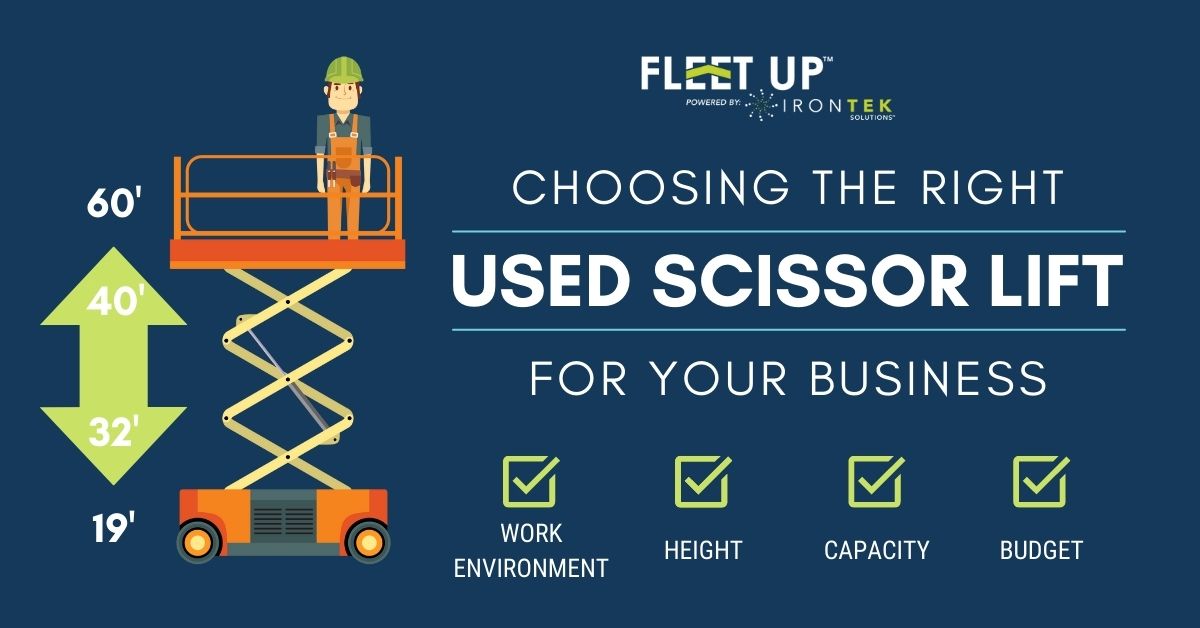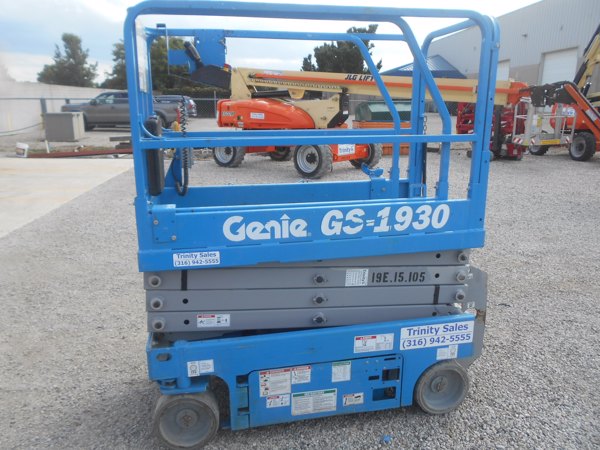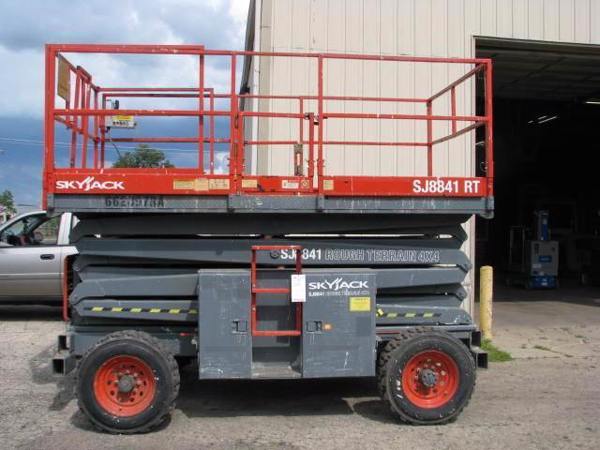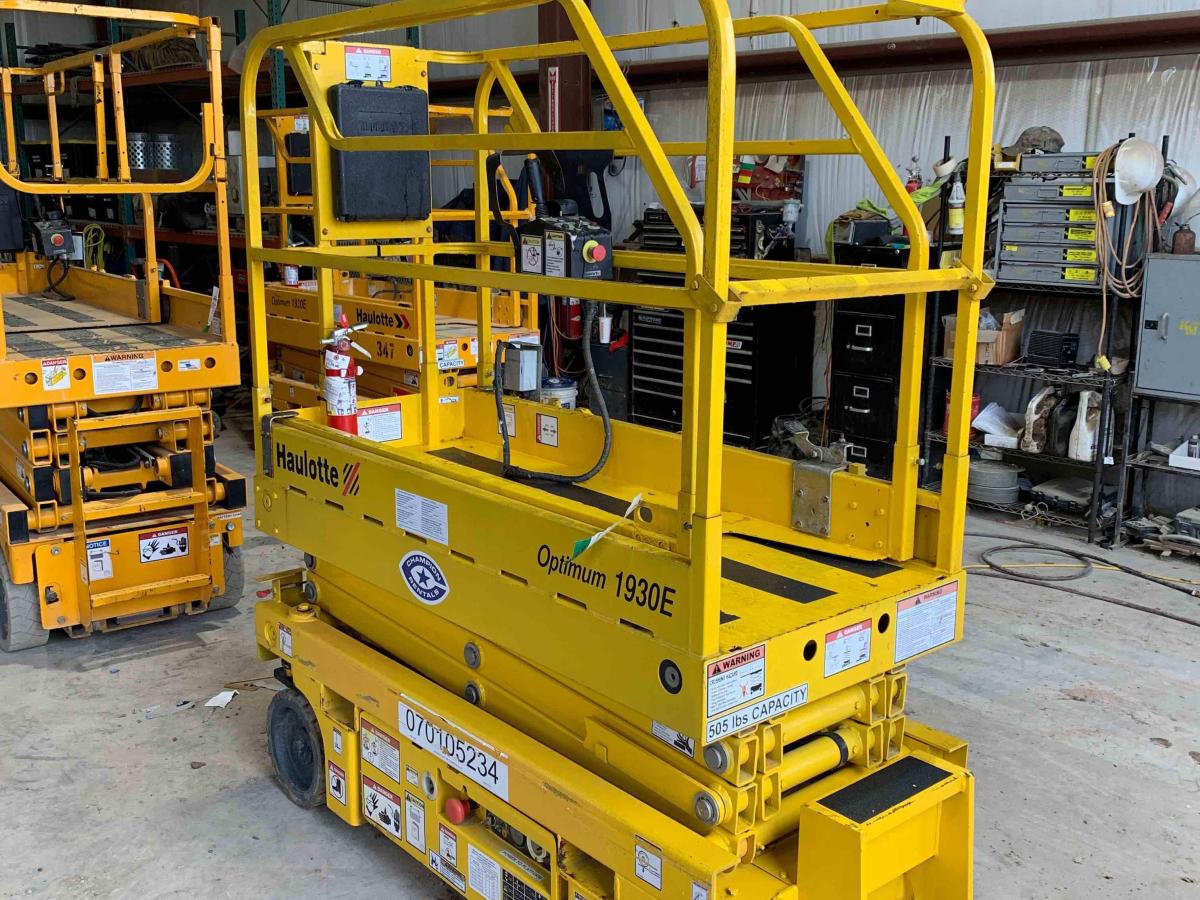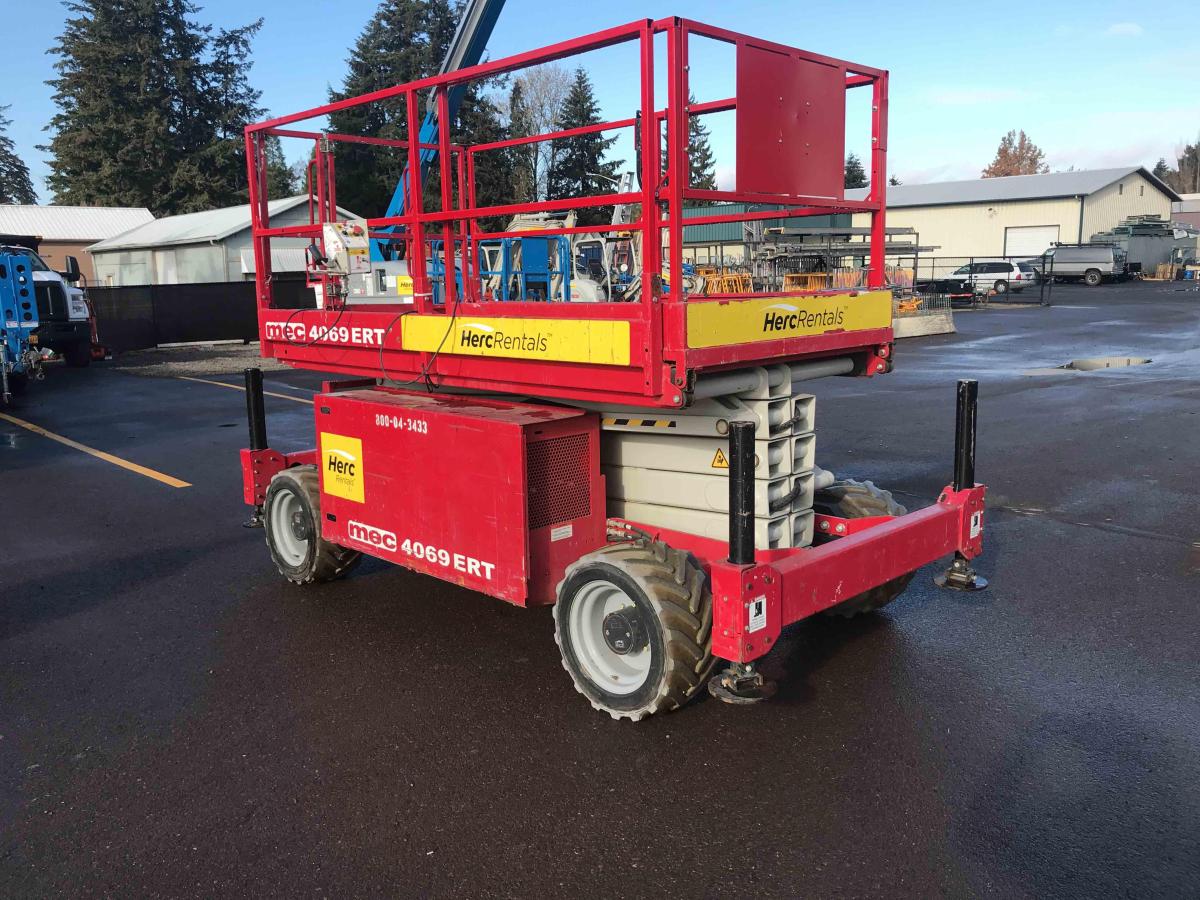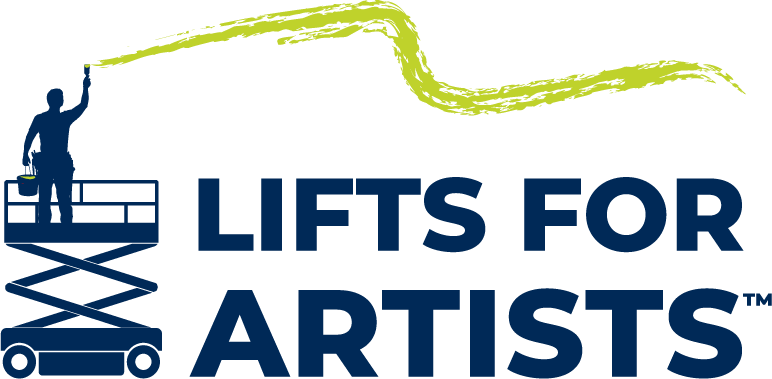Infographic: Choosing the Right Used Scissor Lift for Your Business
Scissor lifts are one of the most commonly used types of equipment available. They are extremely versatile and can be used for a variety of projects and heights. Today, many businesses are buying a used lift to save money instead of buying new or renting equipment for an extended period of time. When you own a business and expect to need a lift for multiple projects over the years, buying used is a great solution.
Before you buy, make sure to consider the following 4 questions. The goal is to find a lift that will work for all of your projects without over buying:
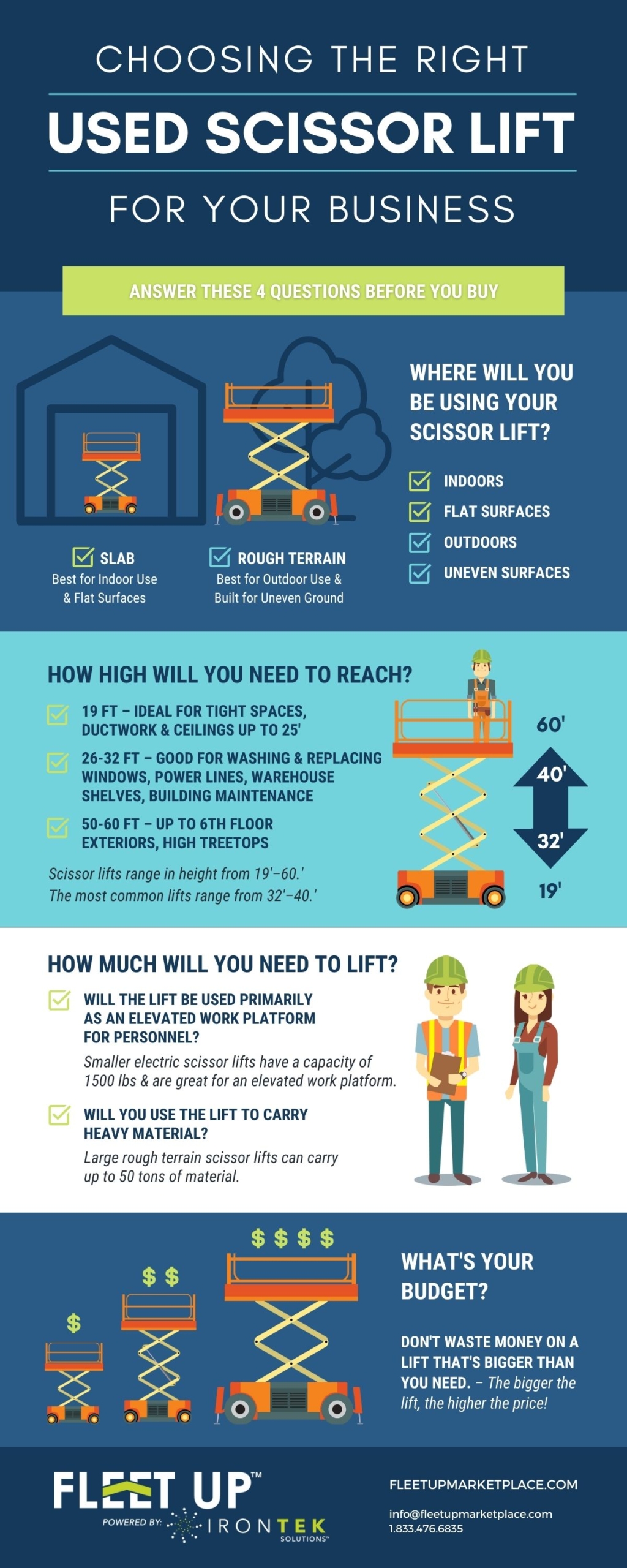
Shop Used Scissor Lifts For Sale on FleetNow
Click here to see used scissor lifts for sale.
Have a question or need more information?
Contact the FleetNow Equipment Experts: info@buyfleetnow.com – or – 216-973-5124
1. Where Will You be Using Your Used Scissor Lift?
Indoors – Electric scissor lifts are intended for indoor work with smooth slab surfaces. Because they are battery powered, there are no hazardous emissions. Look for non-marking tires if you are working in a space with finished floors like retail stores, warehouses, and office buildings. Electric scissor lifts are smaller than rough terrain scissor lifts and can fit through doorways and in tight spaces.
Outdoors – Rough terrain scissor lifts are built to handle rough, muddy, and uneven ground. They are usually powered by gas or diesel fuel, which emit fumes during use. These outdoor lifts are typically larger than electric scissor lifts with large working platforms and a reach in upwards of 50 feet. For added safety, look for a lift with outriggers or stabilizers that are needed when working on an uneven surface.
Both Indoors & Outdoors – Electric scissor lifts can also be used outdoors if they are on a flat slab surface. You will need access to power to recharge the lift when not in use.
Rough terrain scissor lifts can be used indoors if they are small enough to fit through the entrance, but you should be cautious of the fumes caused by the fuel and possible black marks on the floors from the tires.
2. How High Will You Need to Reach?
Scissor lifts range in height from 19′ to 60.’ The most common scissor lifts range in size from 32′ to 40.’
19-Foot Scissor Lifts – If you typically work on buildings with 10-foot ceilings, a 19-foot scissor lift will give you the access you need to reach the ceilings and ductwork. And, 19′ slab scissor lifts are small enough to fit through standard doorways.
26- to 32-Foot Scissor Lifts – 26′ to 32′ scissor lifts give you access to many project types including: Washing & replacing windows, building maintenance, reaching power & cable lines, stocking warehouse shelves, and performing general maintenance in commercial buildings. A 30-foot scissor lift is often used when hanging signs or painting murals on the side of buildings.
50- to 60-Foot Scissor Lifts – Can reach high treetops and sixth-floor exteriors. Some scissor lifts can reach as high as 70 feet.
3. How Much Will You Need to Lift?
Scissor lifts can carry more weight than most other aerial lifts. Before you buy, consider if you will use the lift primarily as an elevated work platform for personnel, or to lift heavy materials needed for the job.
Some rough terrain scissor lifts can carry up to 50 tons of material.
Some of the smaller electric scissor lifts, like the JLG ERT2669, have a platform capacity of 1500 pounds.
4. What’s Your Budget?
Generally speaking, the smaller the lift, the lower the cost.
It’s a good idea to understand how you are going to use you scissor lift so you don’t “over buy.” Over buying can cost you thousands of dollars more than you need to spend, and keep in mind that buying a larger lift will require more storage space.

